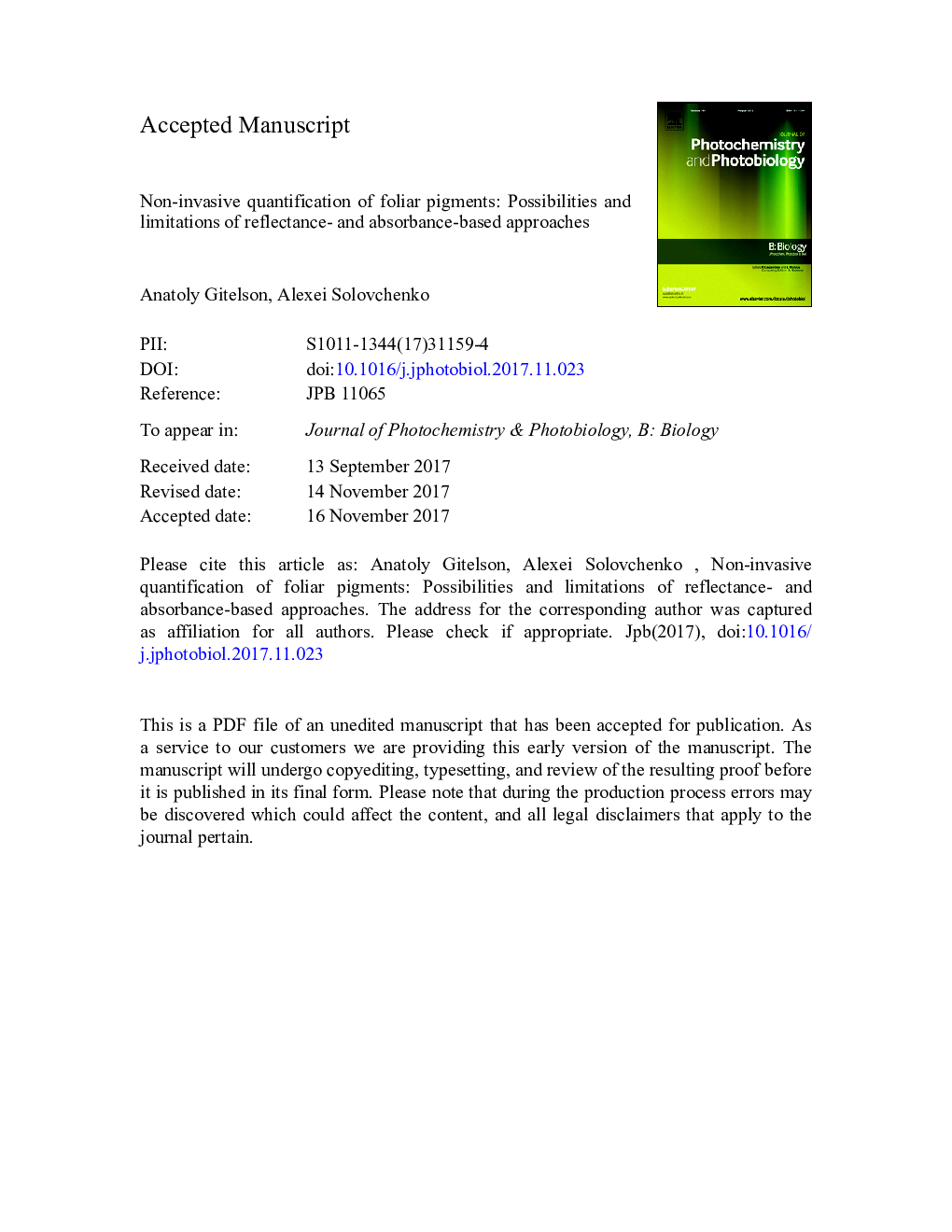| Article ID | Journal | Published Year | Pages | File Type |
|---|---|---|---|---|
| 6493459 | Journal of Photochemistry and Photobiology B: Biology | 2018 | 18 Pages |
Abstract
Established reflectance-based approaches for estimation of foliar pigment contents assume close relationship between leaf absorbance and reflectance. Complex organization and high pigment content of leaves may lead to violation of the essential assumptions under Kubleka-Munk theory relating reflectance and absorbance. We compared relationships of absorbance and reciprocal reflectance vs. pigment content in leaves collected across species, developmental stages and physiological states. As a result, limitations of reflectance-based spectroscopy for pigment quantification were revealed. We deduced in situ absorbance of foliar chlorophylls, carotenoids, and flavonoids (including red-colored anthocyanins) and introduced a concept of specific spectral response of the optical properties to each pigment group. Quantitative criteria of spectral range selection for the absorbance- and reflectance-based techniques yielding effect of each pigment on the background of other pigment absorption were suggested and validated. We argue that absorbance- and reflectance-based approaches to pigment estimation complement each other and can be used synergistically in advanced models for accurate estimating foliar pigments. The study provides a deeper insight into interception of light by photosynthetic and photoprotective pigments as function of physiological condition and developmental stage, which is important for plant biology as well as knowledge-driven selection of spectral bands for noninvasive pigment estimation models.
Keywords
Related Topics
Physical Sciences and Engineering
Chemical Engineering
Bioengineering
Authors
Anatoly Gitelson, Alexei Solovchenko,
